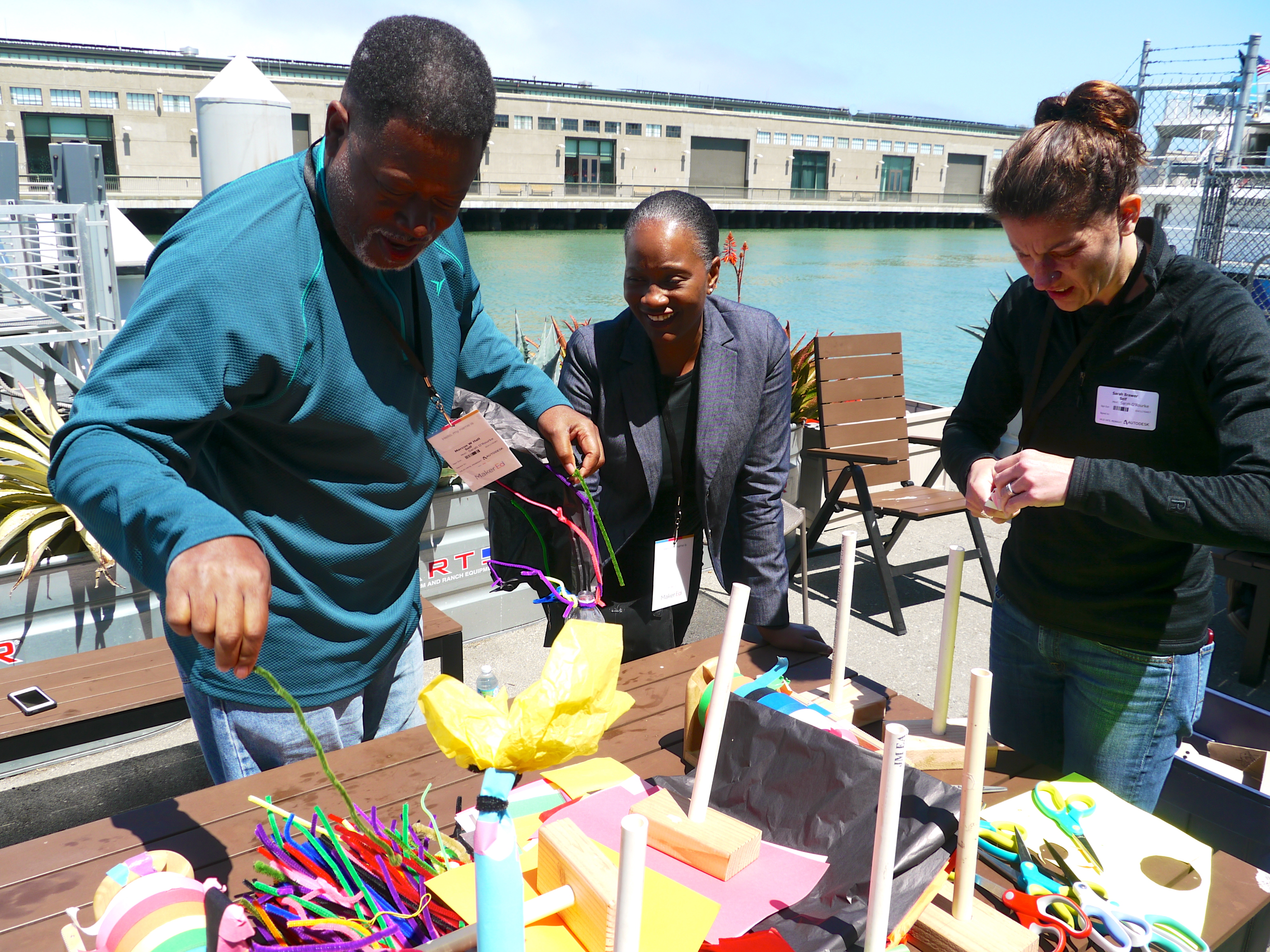
By Scott Miller
It’s an exciting time to be a maker! It is even more exciting to be an administrator that supports and fosters making in our school and community. I have had the opportunity to engage our school community over the past three years to grow our maker education program from a single design challenge in 2013, to a fully developed makerspace with a Maker Education Specialist in 2016. As an elementary educator, I immediately recognized the important problem-solving, critical thinking, and communication skills making activities offered. As our program developed, I was impressed with the increase in student engagement, and the ways in which students would elaborate on their thinking and continually change their designs. This form of learning was open-ended and personalized to meet the needs and imagination of each creator and was easily aligned with NGSS engineering standards. We have had a lot of fun engaging our community in elements of making to generate support for our maker programs. Some of our most successful events to engage parents, teachers, school board members, businesses, and one of local universities in maker education have included:
- Exploratory Maker Open House (Pre-K) – Following kindergarten registration in March, we invite Pre-K families to our school to participate in four mini-stations to explore concepts of making. Kindergarten students from our maker club run simple exploration activities for 15 minute rotations. The rotations included making catapults, designing a simple circuit LED light wand, using paper creations to hold LED lights, and making LED magnetic throwies. At the end of one-hour event, all students leave with a mini maker bag to take home and continue exploring and creating.
- PTA Lunch and Learn – Our PTA has a committee that is focused on STEAM which includes supporting the programs and activities in our makerspace. In the fall, we hosted a professional development session for the parents who signed up for the committee, and taught them different ways to support student inquiry and questioning when exploring the makerspace. At the end of the two hour session, we had parents generate a list of ways they could help support teachers and students in the space. Parent feedback included creating a talent list of parents that could assist with sewing, building, welding, drilling, etc. organized by talent type and accessible by all teachers in our building. The PTA committee also created a master list of volunteers by day and time to assist with projects so that teachers could easily access additional help and resources when signing out the makerspace. Overall parents were amazed at all the different ways they could help influence and support the programming in the makerspace.
- Adult Maker Night – This past spring we hosted an adult only maker night as a way to showcase the advanced capabilities of the different tools and resources in our makerspace. We partnered with our local technology equipment provider to bring in extra laser engravers for the event so all parents in attendance could leave with a personalized souvenir. Parents rotated to four stations in 20 minute intervals that explored laser engraving, cartooning, quilling, and circuitry. Admission for the event was only $10 per family and included appetizers and snacks.
- Family Maker Night – This event was formatted similar to an open house but each grade-level had a different activity and/or station to showcase as an extension from our maker space. Families were able to freely rotate to the six different events and stay for as long as they liked at each station. Stations included woodworking, screen printing, 3D printing, material exploration, vinyl creations, and visiting the maker library.
- School Board Workshop – As a way to fully engage and educate our school board members, we hosted a maker education session for 45 minutes prior to our monthly board meeting. Board members visited three different stations lead by primary center students to experience elements of making and design. At the end of the workshop session, board members were asked to sponsor a children’s literature maker book as a donation to our library to show their support for maker education.
We’ve had an exciting three years growing a community of makers that support our vision. The activities mentioned positively contributed to our development of a sustained makerspace that continues to grow and flourish because of stakeholder support. Looking forward, our school (and district) continues to find ways to seamlessly integrate design thinking and creativity through the use of a makerspace. We are continually reflecting on our curriculum and seeking ways to enhance the creative experiences of our youngest learners.
See how other school administrators and districts are developing and sustaining a community of makers:
- Listen to the Make: Education Forum’s (2016) keynote presentation from Albemarle County Public School’s Superintendent, Pam Moran, and Education Technology Team Leader, Ira Socol. And learn more about maker education in Albemarle County Public Schools.
- Read how Glenn Robbins, Principal at Northfield Community Middle School in New Jersey, has redesigned the school’s hallways and classes in order to increase student voice and capture students’ interests.
- Learn how Piner-Olivet Union School district leaders, Superintendent Jennie Snyder and Principal Gina Silveira, support maker education district-wide.
- Hear how Elizabeth Forward School District transformed a school district, one classroom at a time.
About the Author: Scott Miller has been the principal of Avonworth Primary Center since 2014. He is currently the chair of the Avonworth Technology Committee and plans the annual Teachers Technology Conference. Prior to his current position, he served as Avonworth Elementary School’s Assistant Principal for four years. He also worked for five years as a sixth grade mathematics teacher at Avonworth Middle School. Follow him on Twitter: @drmillerasd.

Leave a Reply